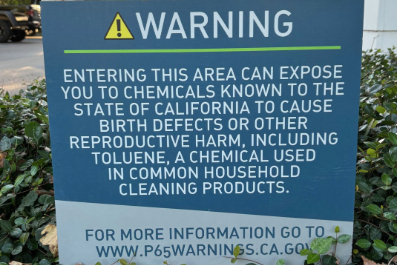
This list includes a wide range of naturally occurring and synthetic chemicals that are listed for cancer or reproductive harm, or both.
Proposition 65 warnings advise of exposures to chemicals that may contribute to an individual's overall lifetime risk of cancer or risk of birth defects or other reproductive harm.
If a warning is placed on a product label or posted or distributed at a workplace, a business, or in rental housing, the business issuing the warning is aware or believes that it is exposing individuals to one or more listed chemicals.

This list includes a wide range of naturally occurring and synthetic chemicals that are listed for cancer or reproductive harm, or both.

Learn why certain chemicals are listed and used, and how you can reduce your exposure to them.

Find answers to commonly asked questions.

Learn about the scientific experts and the processes that help update the Proposition 65 list.

Read the Proposition 65 regulations. Attend meetings, hearings and workshops.

Discover resources, tools, and guidance to help businesses comply with Proposition 65.